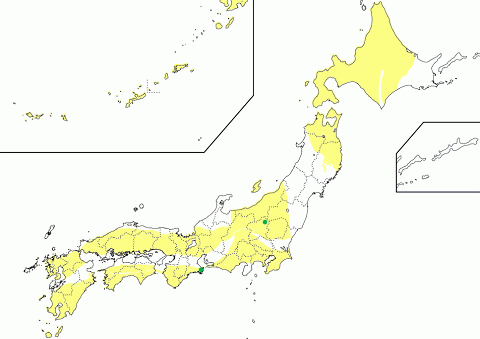Rodingitization
Chemical Process (Alteration) - Ground surface (Submarine)
Required Geological Setting
Occurrence
Metasomatic rock, rodingite, formed by the reaction of gabbro and/or basalt blocks with reductive, hyperalkaline, and Ca-rich fluids produced by serpentinization. Fe, Ti and Na in gabbro and basalt are dissolved, and Ca is added by the fluid produced by serpentinization. By this reaction, gabbro and basalt blocks are altered to minerals composed of such elements as Ca, Si, Al, and O. Typical minerals in rodingite are grossular, clinozoisite, vesuvianite, prehnite, chlorite, and diopside. Rodingites are observed as blocks of nodule-like appearances as they are paler colored and harder than surrounding serpentinite. Released fluid by rodingitization is reductive, hyperalkaline, and rich in Na and Ti. Albitite including jadeite rock is fomed by this reductive, hyperalkaline, Na and Ti-rich fluid.

Distribution of Rodinigite described in this site.
Reported Minerals
- Grossular (Hydrogrossular)
- Pectolite
- Prehnite
- Clinozoisite
- Vesuvianite
- Chlorite
- Diopside